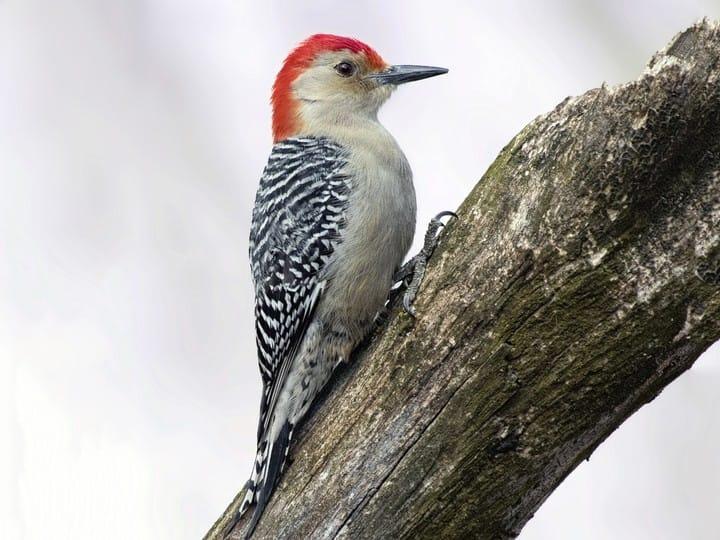Woodpeckers Unleashed: Discovering the Wonders of These Experienced Tree Mountain Climbers
Woodpeckers, with their unique markings and balanced drumming echoing with wooded areas, hold an one-of-a-kind place in the avian globe. Their specialized makeup and adjustments allow them to browse upright surfaces with unmatched skill. Nevertheless, their proficiency of tree climbing is just one aspect of their interesting behavior. As we explore the elaborate information of woodpeckers' nesting routines, feeding strategies, and the ongoing conservation initiatives to protect these impressive birds, a deeper recognition for their location in nature unravels.
Anatomy and Adaptations
When analyzing the anatomy and adjustments of woodpeckers, one can observe amazing attributes that enable these birds to grow in their specialized environmental specific niche. Woodpeckers are outfitted with a collection of unique anatomical features that aid them in their woodpecking habits. One of the most popular functions is their strong, chisel-like beak, which is specialized for boring right into timber to reveal pests or develop nesting dental caries. This beak is sustained by solid neck muscles and a highly established skull framework that serves as a shock absorber, enabling woodpeckers to consistently eat trees without creating mind injury. Furthermore, woodpeckers have zygodactyl feet, with 2 toes facing onward and 2 facing backward, providing a firm grasp on tree trunks while they look for food or drum for interaction.
Additionally, woodpeckers have an unique tongue structure that is long, barbed, and sticky, allowing them to remove bugs from gaps in timber. This specialized adjustment permits woodpeckers to exploit a food source that is inaccessible to many various other bird types. Overall, the makeup and adjustments of woodpeckers display the exceptional evolutionary remedies that have actually allowed these birds to grow in their arboreal habitat.
Drumming Behavior
Having actually checked out the composition and adaptations of woodpeckers, the emphasis now changes to comprehending their drumming behavior, a distinct element of their interaction and territorial display screens. Drumming is an essential kind of communication amongst woodpeckers, serving several objectives such as establishing regions, drawing in friends, and signaling alarm system. Each woodpecker species has an one-of-a-kind drumming pattern that assists people acknowledge members of their own varieties and differentiate them from rivals or predators.
Woodpeckers generate drumming sounds by quickly pecking on resonant surfaces such as dead trees, utility posts, or even steel objects, developing a collection of balanced beats. The intensity and rate of drumming can differ based on the objective; for example, a quick drumming sequence may signify aggressiveness in the direction of intruders, while a slower and softer drumming pattern can indicate courtship (Woodpeckers in Florida). Furthermore, woodpeckers may readjust the regularity and period of their drumming to convey certain messages effectively
Nesting Habits
Discovering the nesting behaviors of woodpeckers reveals fascinating insights into their reproductive habits and environment choices. Woodpeckers are known for their special nesting choices, frequently excavating cavities in trees to create protected rooms for elevating their young. These dental caries serve not only as a nesting site but also as a safe sanctuary from killers and stormy weather.
Woodpeckers exhibit a high level of fidelity to their nesting click here for more info sites, commonly going back to the very same area time after time. This actions highlights the relevance of suitable habitat availability for their reproductive success. The selection of a nesting site is essential for woodpeckers, with factors such as tree species, height, and degeneration phase playing substantial duties in their decision-making procedure.
Interestingly, some woodpecker species are recognized to dig deep into numerous tooth cavities within their area, giving themselves with different nesting alternatives. This method may act as a form of insurance coverage against prospective hazards or disruptions to their key nesting website.

Feeding Techniques
One of the most distinctive feeding actions of woodpeckers is drumming, which involves rapid pecking on trees to reveal bugs under the bark. Woodpeckers are additionally recognized to excavate cavities in trees to gain access to hidden insect larvae or sap. Some varieties, like the acorn woodpecker, store nuts in specially developed holes called granaries.
Preservation Efforts
Among the detailed feeding techniques displayed by woodpeckers, the conservation initiatives targeted at guarding these fascinating birds play a critical find here duty in preserving their environments and populations. Woodpeckers deal with different hazards to their survival, including habitat loss as a result of logging, environment modification modifying their environments, and collisions with manufactured structures such as buildings and lorries - Woodpeckers in Florida. Conservationists are actively functioning to resolve these difficulties and guarantee the long-lasting well-being of woodpecker varieties

Education and learning and public recognition campaigns are likewise crucial parts of woodpecker conservation initiatives. By raising awareness regarding the value of these birds in preserving healthy forest ecosystems, preservationists can gather assistance for environment preservation initiatives and promote accountable land administration practices. With joint efforts between scientists, policymakers, and neighborhood areas, we can interact to protect a future where woodpeckers prosper in their natural environments.
Final Thought
